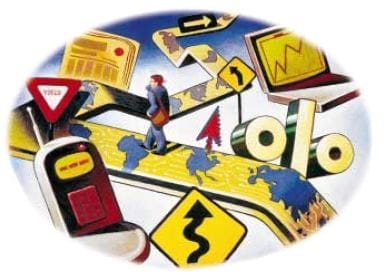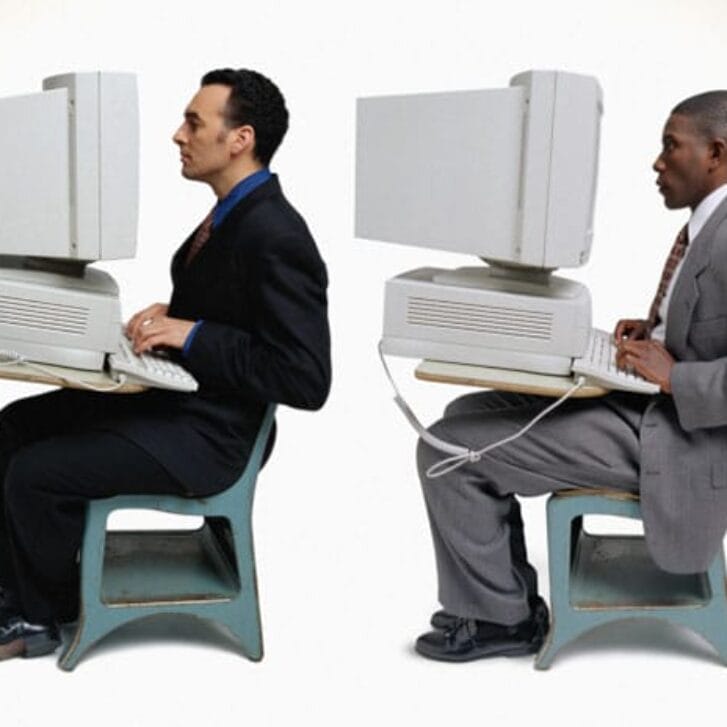By Michael Baltes
This past winter, Yoram (Jerry) Wind, the Lauder Professor of Marketing at Wharton, and Jeremy Main, a former editor at Fortune magazine, published a book entitled Driving Change (The Free Press, 1998). Their book is based on nearly a decade of research conducted at the SEI Center for Advanced Studies in Management, a think tank at Wharton that looks at the future of business.
Driving Change includes in-depth studies of many of the world’s leading corporations, including ABB Asea Brown Boveri, AT&T, Astra Merck, General Electric, Hewlett-Packard, Honda, Medquist, Microsoft, 3M, SAP, Toyota and Xerox, among others. Each chapter discusses the experience of companies that have put new ideas into action and analyzes which ideas worked, which didn’t, and what lessons were learned. The result is an analysis of the qualities that all corporations will need to thrive in the century ahead.
We interviewed Jerry Wind shortly after the book’s release in January. Below are his comments.
![]() What characteristics will corporations need to succeed in the future?
What characteristics will corporations need to succeed in the future?
Wind: We consistently saw four operating principles needed to govern the 21st century enterprise. First, the successful corporation will be dynamic. The pace and scope of change have already reached levels where business executives who were comfortable until recently with five-year plans now are afraid to predict what will happen next year. New technologies, especially information technology, new products, new competitors, and new markets are all emerging so fast that corporations must be ready to grasp the new before the old has even started to decline.
Second, the leader must be capable of creating an integrated strategy, an integrated architecture, and be able to pursue cost reductions and efficiencies while also pursuing growth.
The new corporation must also be effective. Today’s problems do not come from a lack of ideas and theories. Many of them — total quality management, for example, or even reengineering — provide a good perspective for creating a new kind of corporation, if properly applied. But they have failed to live up to expectations, mostly because of poor execution.
Finally, the new enterprise must be responsible. Business is forced by sheer self-interest if nothing else to treat its employees and the rest of society better than it has. American business has two personalities. The most common view portrays business as unfair, greedy, ruthless and dishonest. The other personality is trying in an enlightened way to respond to a whole set of urgent pressures from customers, from competitors, from technology and from society. At its best, this business is smart and innovative, supplies us with excellent products and services, responds intelligently to the customer, balances the needs of the other stakeholders, copes with globalization, has imaginative ways of getting the best from its employees and making their work more satisfying, and contributes, sometimes generously, to charities and the community. Most companies are in fact a mixture of these two personalities, the good and the bad.
![]() How should companies deal with perpetual change?
How should companies deal with perpetual change?
Wind: First, companies should develop a process for monitoring changes in their competitive environment and for spotting opportunities in technology, globalization and consumer markets. A number of companies are moving now to appointing senior executives in charge of watching and understanding each of their competitors. A number of organizations today have chief information officers who oversee the technological environment. That’s important because many of the strategic alliances being formed are really designed to address these issues of technology.
Second, a company should decide on stretch objectives. If you’re trying to come up with “better, cheaper and faster” new products, you cannot do it by improving new product development activities by two percent or by five percent. You must strive to double the effectiveness of any new product development efforts, then figure out how to restructure the whole process.
Third, strive for creative, strategic change. One of the biggest problems for corporations, especially large corporations, is lack of creativity. Many of the strategies are the “me too” type. The key is for companies to employ approaches that lead to more creative strategies.
A good example is 3M. Their culture encourages innovation and creativity and gears everything in the company towards that goal — including performance measures, organizational structures, processes and reward systems. It’s not simply saying “I want to be innovative.” It’s designing the organization to support and encourage innovation.
![]() How important is leadership versus a system?
How important is leadership versus a system?
Wind: Leadership is key. Individuals drive most of the changes we see at the corporate level. Whether it’s Lew Platt, WG’66, at Hewlett-Packard or Al West, WG’66, at SEI Corp., the individual leader drives change.
They cannot do it by themselves. The more enlightened companies are empowering more individuals and teams. But in the end, it’s really the leaders driving the change.
Business is going to be stressful, risky, and uncertain, possibly even more than it is today. We may also find that the new enterprise overburdens management. For example, the carrot-and-stick approach to changing corporate culture and behavior loads a lot of luggage on compensation plans. We want performance appraisals, promotions, salary, and bonuses to depend on a manager’s performance as team members and on their contributions to improving quality and on their focus on the customers and on their willingness to learn, their contribution to diversity and whatever else their bosses may think is critical.
The leader may be burdened similarly with an excess of new roles, all deemed essential. The leader must show by example that teams matter and spend time working with them. The leader must demonstrate a commitment to ethics, to quality, to alliances and partnerships. Without the leader’s active intervention in all these and a few other areas the company won’t change. That’s a heavy load to carry.
![]() How will new technology impact the corporations and industries of the future?
How will new technology impact the corporations and industries of the future?
Wind: It’s hard to imagine a company in any industry that cannot benefit from technology if it makes the right type of innovative moves. But there are exceptions. The long-term viability of a business such as Blockbuster Video is questionable, considering the disintermediation being brought about by the Internet and other technological advances. If someone can get video on demand, or pay TV or movies distributed electronically without leaving their house, why would they go to rent a video at a store? It is not so much a matter of industries being eliminated by technology, but more a notion of how can you, within any given industry, use technology to your advantage to reshape the nature of your business.
![]() Will the corporation of the future retain some traits of the old corporate model, or will it be an entirely new entity?
Will the corporation of the future retain some traits of the old corporate model, or will it be an entirely new entity?
Wind: Don’t look for a clean break. There are no stark either/or choices; adopting new characteristics doesn’t necessarily mean killing the old ones. Rather, we see a shift in the balance. Hierarchies will not disappear. Teams will not become all-powerful. Executives will not defer to their employees for all decisions. There will be a mix of old and new, the balance varying from company to company depending on the leader, the industry and the country. Family firms in India and China, the Korean chaebol, the Japanese keiretsu, the entrepreneurial American corporations, and the constrained social model of business in Europe are going to react in different ways — though perhaps not so different as in the past. Each company will have its unique response.
But the new enterprise must also be good at the old basics of running a business well: cash flow, finance, marketing, and timing.
![]() Are traits of the 21st century corporation unique to U.S. firms?
Are traits of the 21st century corporation unique to U.S. firms?
Wind: The ideas of the new enterprise are applicable around the world, but the flexibility of U.S. business has given it a huge advantage. Call it willingness to suffer pain now for gain later, or call it ruthlessness, but the American company has proven ready to do what it takes to change. Japanese companies remain so committed to lifetime employment, and European companies, with the exception of the British, so committed to their social contract that they haven’t been able to extract any comparable advantage from the new management. There has been some shifting toward a less rigid commitment. But Japanese business isn’t creating new companies or new jobs at anything like the rate we see in the U.S., while European companies are losing opportunities and contributing to a brutal level of unemployment. American companies may seem less humane but they have created millions of new jobs.
![]() What impact will the unprecedented merger and alliance activity have on the 21st century corporation?
What impact will the unprecedented merger and alliance activity have on the 21st century corporation?
Wind: There will be a movement toward the “networked corporation.” Companies cannot continue looking at themselves as a single entity that can do everything, but they must link with other providers in various competence areas. There will be an increasing number of strategic alliances in all stages of the value-added chain. Companies recognize that if they want to accomplish certain things, they will need certain competencies. Increasingly companies are realizing that they do not have to develop all of these competencies internally. They can form strategic alliances to do this, or outsource.
Sometimes mergers and acquisitions are not just about scale, but because of the need to have a complementary product line or a better entry into different geographic markets. Then you can get some economies of scale and scope.
























